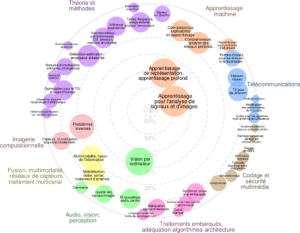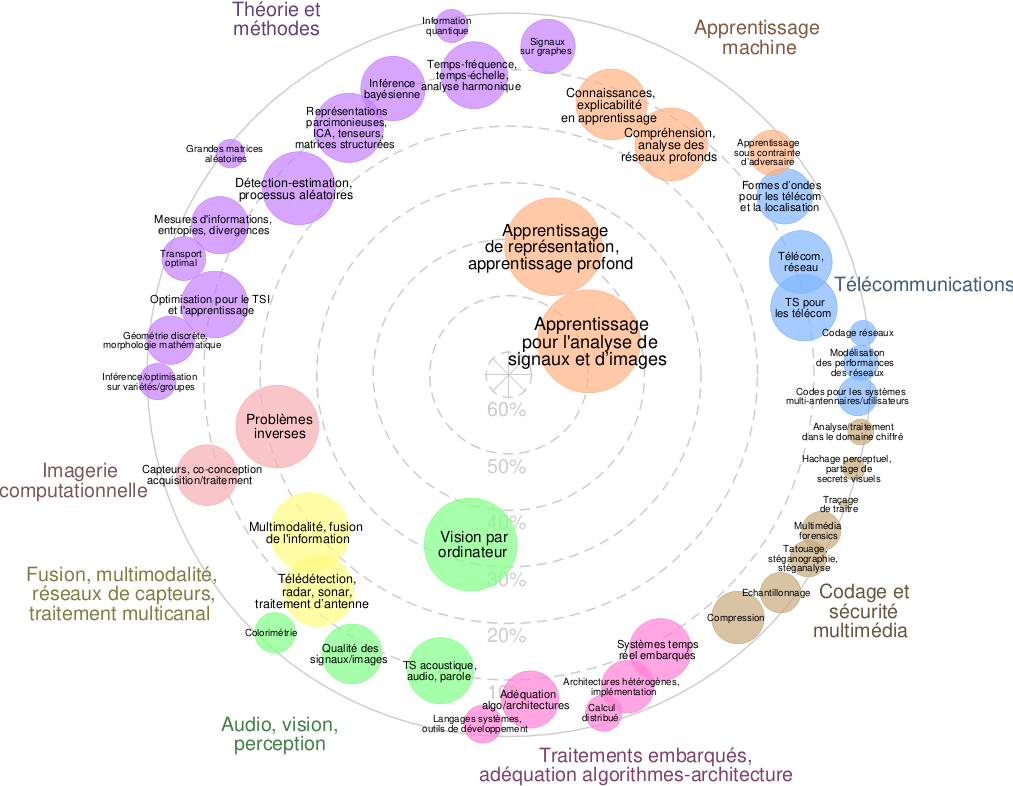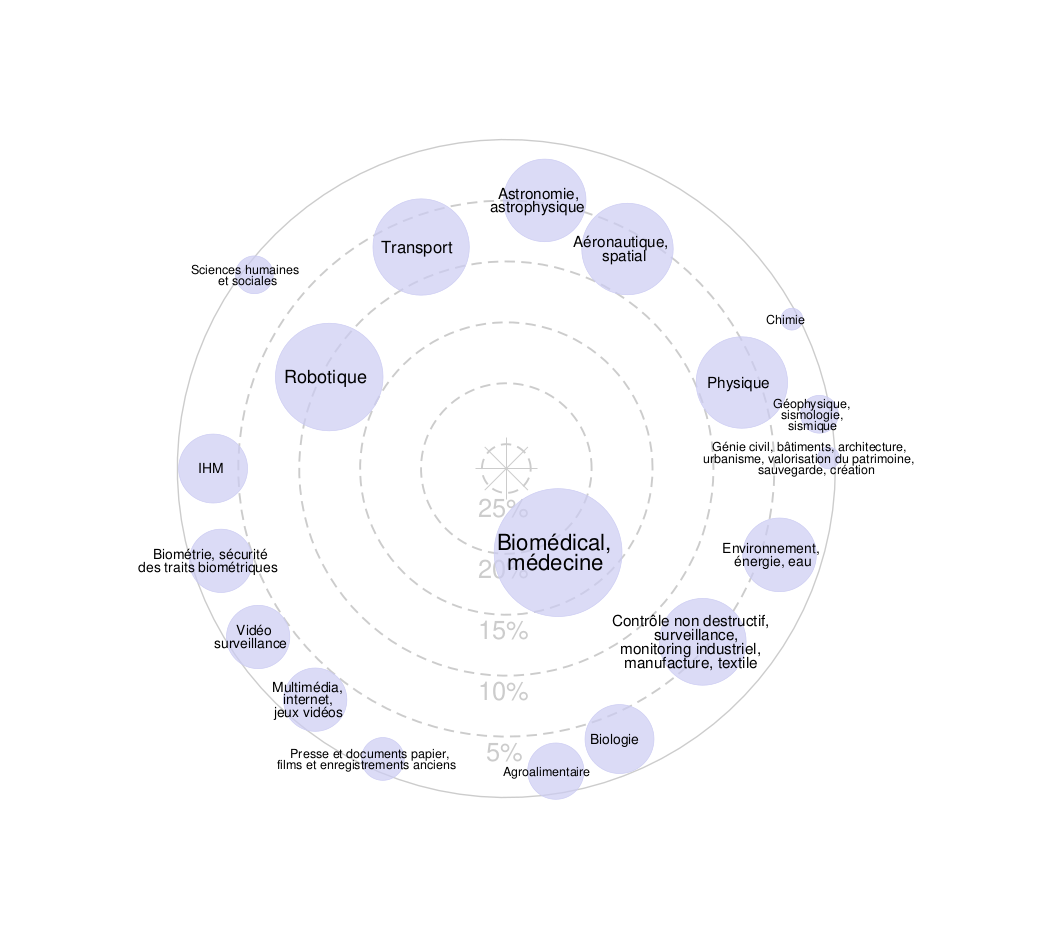Réunion
Domaines émergents en traitement du signal audionumérique : éco-acoustique, environnements urbains, industriels et médicaux
Axes scientifiques :
- Audio, Vision et Perception
Organisateurs :
Nous vous rappelons que, afin de garantir l'accès de tous les inscrits aux salles de réunion, l'inscription aux réunions est gratuite mais obligatoire.
La réunion sera également accessible en distanciel mais l'inscription est obligatoire
Inscriptions
3 personnes membres du GdR IASIS, et 3 personnes non membres du GdR, sont inscrits à cette réunion.
Capacité de la salle : 70 personnes. Nombre d'inscrits en présentiel : 5 ; Nombre d'inscrits en distanciel : 1
65 Places restantes
Annonce
Informations pratiques
- Inscriptions : les documents (ou actions sur Etamines / Notilus) nécessaires au traitement des demandes de prise en charge de mission : doivent parvenir à notre gestionnaire avant le 30 octobre.
- Mot de passe zoom : DZ5eP&!y
(English version below)
Éthologie, écologie, géographie urbaine, génie industriel et génie biomédical sont autant de disciplines qui valorisent le son comme information. Longtemps restreinte aux seuls signaux de parole et musique, le traitement du signal audio trouve dans ces disciplines des applications probantes pour l’instrumentation. En retour, il se nourrit de nouveaux défis sur le plan de la recherche fondamentale. En témoignent, entre autres, des capteurs acoustiques in situ toujours plus autonomes et adaptatifs ; un renouveau des méthodes statistiques et géométriques pour le temps–fréquence ; ainsi que l’invention de techniques d’analyse et synthèse fondées sur l’apprentissage pas ou peu supervisé.
C’est dans ce contexte que nous entendons établir un bilan d’étape des travaux sur les sons hors parole et musique. Ces “domaines émergents” incluent, de façon non exhaustive, l’éco-acoustique, l’acoustique urbaine, l’acoustique industrielle, et l’acoustique médicale. Les orateurs et oratrices invité-e-s dresseront un panorama des principaux enjeux inhérents à ces domaines tout en ayant le souci de se rendre accessible à la communauté IASIS dans son ensemble. Par ailleurs, l’appel à communications et posters permettra d’aborder des points plus spécifiques de la recherche en cours.
Si vous souhaitez faire partie des orateurs, merci d’écrire avant le 1er Septembre à Mathieu Lagrange : mathieu.lagrange (@) ls2n.fr et Vincent Lostanlen : vincent.lostanlen (@) ls2n.fr en transmettant un titre, résumé de l’intervention, et brève biographie. Les présentations se font de préférence en Anglais et durent 45 minutes suivies de 15 minutes de questions.
Si vous souhaitez participer à la session poster, merci d’écrire avant le 1er Octobre à Vincent Lostanlen : vincent.lostanlen (@) ls2n.fr. En préparation de la journée, il vous sera demandé un titre ainsi qu’un « audiocarnet » : c’est-à-dire, un fichier audio d’une minute environ donnant à entendre les sons sur lesquels porte votre poster. Pour des exemples d’audiocarnets déjà parus, voir : https://hal.science/AUDIOCARNET
Emerging topics in audio signal processing: ecoacoustics, urban acoustics, industrial acoustics, medical acoustics
Ethology, ecology, urban geography, industrial engineering, and biomedical engineering are all disciplines that value sound as information. Long limited to speech and music signals alone, audio signal processing is finding compelling applications for instrumentation in these disciplines. In turn, it is fueled by new challenges in fundamental research. This is evidenced, among other things, by increasingly autonomous and adaptive in situ acoustic sensors; a revival of statistical and geometric methods for time-frequency; and the invention of analysis and synthesis techniques based on unsupervised or minimally supervised learning.
It is in this context that we intend to provide a progress report on work on sounds other than speech and music. These « emerging topics » include, but are not limited to, ecoacoustics, urban acoustics, industrial acoustics, and medical acoustics. The invited speakers will provide an overview of the main issues inherent in these fields while striving to be accessible to the IASIS community as a whole. Furthermore, the call for talks and posters will allow for more specific areas of ongoing research to be addressed.
If you wish to be a speaker, please write to Mathieu Lagrange at mathieu.lagrange (@) ls2n.fr and Vincent Lostanlen at vincent.lostanlen (@) ls2n.fr before September 1st, providing a title, a summary of the presentation, and a brief biography. Presentations are preferably in English and last 45 minutes, followed by 15 minutes of questions.
If you wish to participate in the poster session, please write to Vincent Lostanlen at vincent.lostanlen (@) ls2n.fr before October 1st. In preparation for the day, you will be asked for a title as well as an « audiocarnet »: that is, an audio file of approximately one minute providing the sounds your poster is about. For examples of audiocarnets already published, see: https://hal.science/AUDIOCARNET
Organisateurs :
- Thomas Hélie (STMS, Paris)
- Mathieu Lagrange (LS2N, Nantes)
- Vincent Lostanlen (LS2N, Nantes)
Programme
09:30 Accueil (Café)
10:00 Introduction
10:15 Conférence 1
11:15 Conférence 2
12:15 Repas
14:00 Conférence 3
15:00 Conférence 4
16:00 Présentation brève des posters en salle
16:30 Posters et café
17:30 Clôture
Résumés des contributions
Camille Desjonquères
Title: Understanding and Modeling Ecosystem Structure and Function through the lens of Ecoacoustics
Abstract: The speed of global change keeps increasing bringing up dramatic turn over of species assemblages. This can lead to modified ecosystem functions such as changes in pollination rates or seed dispersion. These functions require close monitoring. Monitoring methods based on human observation require a lot of workforce and are usually limited in their spatiotemporal and species coverage. Progress in computing power and data storage fostered the emergence of novel autonomous sampling methods (e.g. metabarcoding, remote sensing, camera traps or acoustic monitoring). The use of acoustic monitoring appears as a convenient solution for an autonomous and automatic monitoring of species dynamics and activity in various ecosystems. In this talk, I present current and possible future possibilities of this type of monitoring to access species interactions and ecosystem functions. My aim is to understand and model the impact of global change through sound. Using data derived from acoustics is expected to improve our predictions of spatiotemporal species dynamics in various ecosystems.
Bio: I am a researcher in Ecoacoustics. My work consists in studying sounds emanating from ecosystems, communities and populations in order to understand their diversity and evolution and interpreting ecological dynamics and functioning. I strive to understand how the biotic and abiotic environment affect acoustic signaling in animals. I am particularly interested in the dynamics of acoustic communities and the effect of social interactions on acoustic signals. I am currently conducting two main lines of research: developing methods of passive acoustic monitoring in various environments (including freshwater) and understanding the role of socially mediated plasticity in rapid adaptation and reproductive isolation.
Nicolas Misdariis
Title: Digital signal processing and audio synthesis for sound design
Abstract: Sound design is a relatively recent field of design, based on an approach that aims to consider the sound component right from the design phase of an object in order to make an intention audible; or, to put it another way, and to quote Louis Dandrel, a discipline that mainly consists of designing with sound. Its raw material therefore addresses issues of generation, representation, transformation... in other words, the manipulation of a sound object that is most often digital – or digitised – and for which signal processing and sound synthesis are essential and fertile tools.
More specifically, one of the major issues in the sound design process concerns the transition from ideation to realisation. The question is how to move from a symbolic representation (graphic, semantic or even simplified audio) to a sound artefact – even at the sketch or prototype stage – capable of meeting functional and aesthetic specifications. This often weak but crucial link in the design process will be explained and illustrated by experiments and implementations carried out as part of various research-project approaches that have enabled us to acquire new knowledge in the field as much as to provide solutions to an applied problem.
Bio: Nicolas Misdariis is a research director, head of the Sound Perception & Design group in the Ircam STMS Lab. He is graduated from an engineering school. He got his Master thesis on applied acoustics and his PhD on musical and environmental acoustics. He defended his HDR (Habilitation to Direct Research) on the topic of Sciences of Sound Design. He has been working at Ircam as a research fellow since 1995.
During that time, he developed research works and industrial applications related to sound synthesis
and reproduction, environmental sound and soundscape perception, auditory display, human-machine
interfaces, interactive sonification and sound design. Since 2010, he is also a regular lecturer in the
Sound Design Master at the High School of Art and Design in Le Mans (ESAD TALM, Le Mans).





